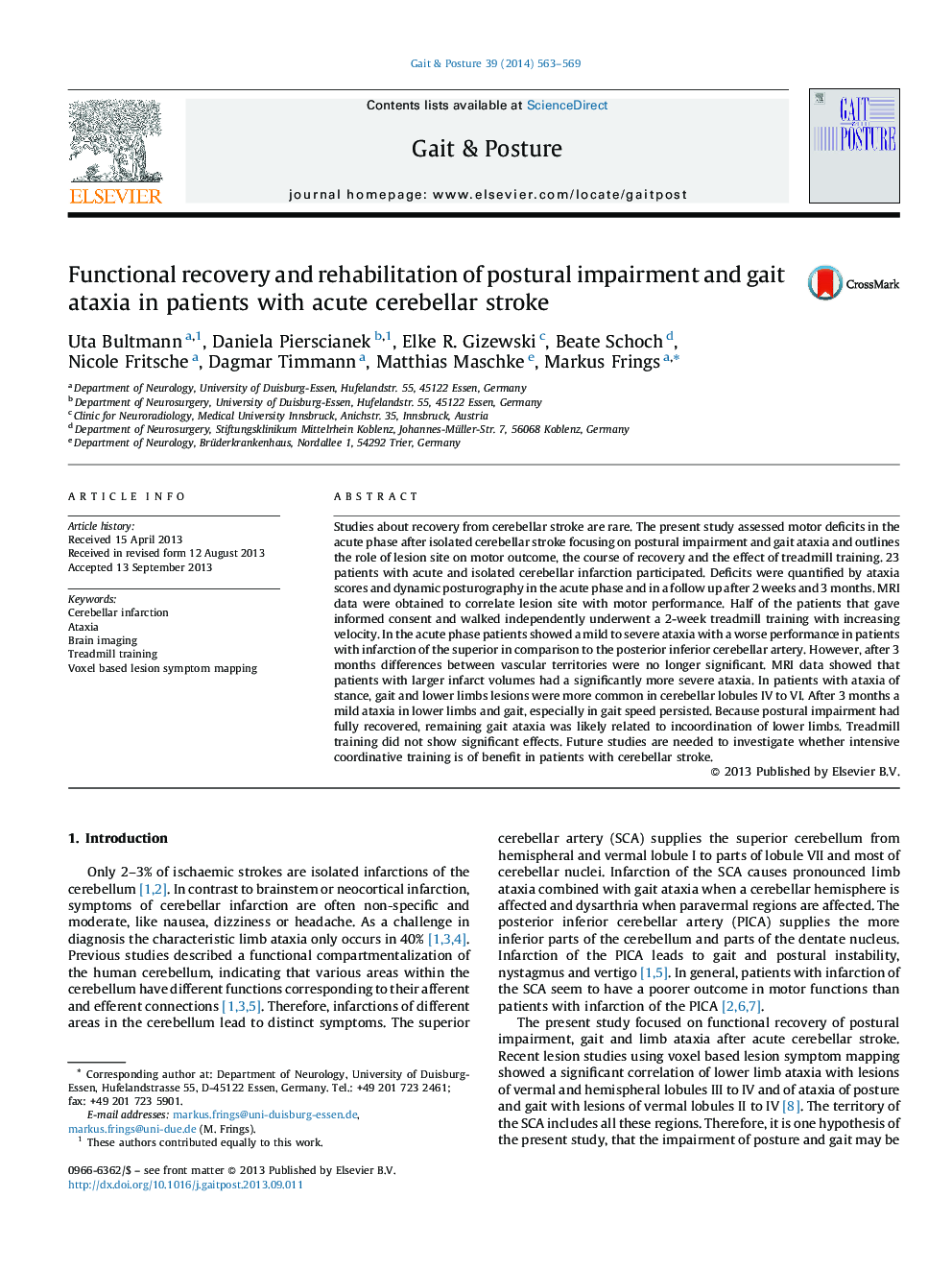| Article ID | Journal | Published Year | Pages | File Type |
|---|---|---|---|---|
| 6207141 | Gait & Posture | 2014 | 7 Pages |
â¢We studied recovery from postural and gait deficits after acute cerebellar stroke.â¢Differences between vascular territories were no longer significant after 3 months.â¢After 3 months postural impairment had fully recovered.â¢Remaining mild gait ataxia was likely related to incoordination of lower limbs.â¢Treadmill training did not show significant effects in acute cerebellar stroke.
Studies about recovery from cerebellar stroke are rare. The present study assessed motor deficits in the acute phase after isolated cerebellar stroke focusing on postural impairment and gait ataxia and outlines the role of lesion site on motor outcome, the course of recovery and the effect of treadmill training. 23 patients with acute and isolated cerebellar infarction participated. Deficits were quantified by ataxia scores and dynamic posturography in the acute phase and in a follow up after 2 weeks and 3 months. MRI data were obtained to correlate lesion site with motor performance. Half of the patients that gave informed consent and walked independently underwent a 2-week treadmill training with increasing velocity. In the acute phase patients showed a mild to severe ataxia with a worse performance in patients with infarction of the superior in comparison to the posterior inferior cerebellar artery. However, after 3 months differences between vascular territories were no longer significant. MRI data showed that patients with larger infarct volumes had a significantly more severe ataxia. In patients with ataxia of stance, gait and lower limbs lesions were more common in cerebellar lobules IV to VI. After 3 months a mild ataxia in lower limbs and gait, especially in gait speed persisted. Because postural impairment had fully recovered, remaining gait ataxia was likely related to incoordination of lower limbs. Treadmill training did not show significant effects. Future studies are needed to investigate whether intensive coordinative training is of benefit in patients with cerebellar stroke.
